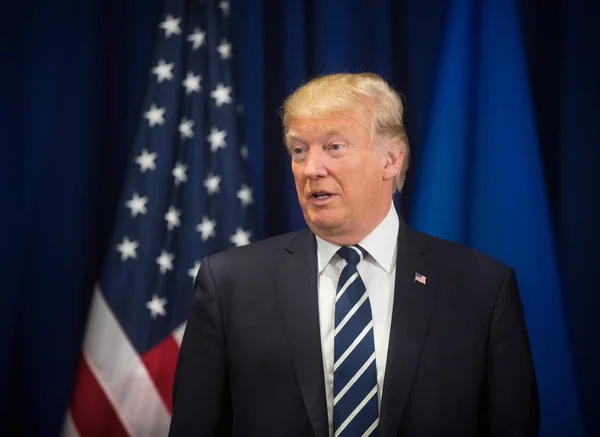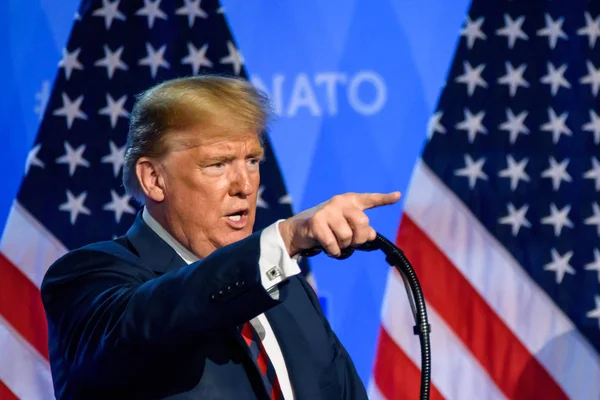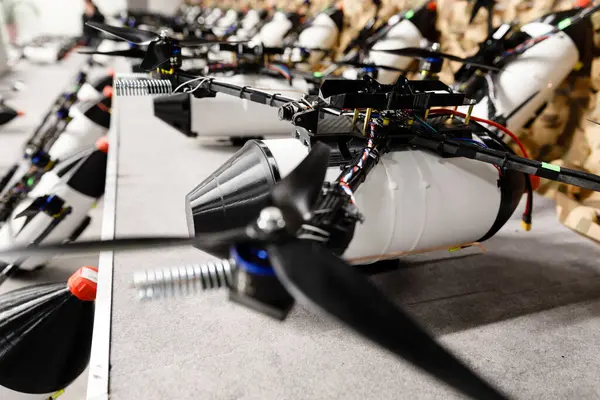
Might a €10,000 drone be enough to get NATO to rethink its entire air defense strategy? Within the past month, a series of Russian incursions into European airspace have been met with a sharp turn in U.S. rhetoric, as President Donald Trump urged NATO allies to shoot down Russian planes and drones flying into their airspace. The statement, made during the 2025 NATO Summit, has sent shockwaves through the alliance’s discussion on deterrence, escalation, and the cost of defending its borders.

The backdrop is a war in Ukraine that is now in its fourth year, with Moscow escalating unconventional tactics ranging from swarms of drones to jamming GPS signals while NATO scrambles to keep up. The eastern edge of Europe has been used as a testing ground for military technology and political resolve. Below are seven trends shaping this high-stakes phenomenon, ranging from Trump’s intervention to the emerging “drone wall” to the economic pressures hampering Russia’s war machine.

1. Trump’s Call for Direct NATO Action
During the NATO Summit, President Trump broke with past reserve by saying that the alliance members should shoot down any Russian aircraft entering the airspace of the NATO alliance. This was a stark contrast to his response to the September drone incursion into Poland, where he left open the possibility that it “could have been a mistake.” His new policy, released at the same time as meetings with European leaders and Ukrainian President Volodymyr Zelenskyy, provides political cover for more permissive rules of engagement.
Trump connected his position to Russia’s faltering war effort, tweeting, “Putin and Russia are in BIG Economic trouble, and this is the time for Ukraine to act.” The remark underscores his belief that intense European military pressure can restore to Ukraine its pre-war borders. However, defense experts observe, this same clarity also constrains NATO’s freedom of action in a crisis, increasing the potential for the swift escalation of a Russian aircraft being shot down.

2. Operation Eastern Sentry and NATO’s Air Defense Overhaul
Launched only weeks after a mass Russian drone incursion into Poland, Operation Eastern Sentry is the most ambitious air defense posture shift by NATO in years. The multidomain mission crosses land, sea, and air capability from the Black Sea to the North Sea, combining formerly disconnected national air policing efforts into a networked whole.
Eight countries have already committed resources, from French Rafales in Poland to British Typhoons and German Eurofighters. But as the Supreme Allied Commander of NATO Alexus Grynkewich described it, the operation is short-term until the longer-term solutions like the suggested drone wall are available. The cost is the argument of critics that comes with using multimillion-dollar jets to chase inexpensive drones, a mismatch that NATO is desperately trying to rectify with lower-cost, rapid-response systems.

3. The Drone Wall: European Multi-Layered Defense Concept
European officials have approved a “drone wall” to address the surge in unmanned incursions. Not a physical barrier, it would be a multi-layered scheme of detection and intercept systems that integrates radar, acoustic sensors, and electronic warfare to jam or spoof hostile drones.
The plan was “timely and necessary” according to NATO Secretary-General Mark Rutte, but Germany’s defense minister warned that it would take three or four years to implement. Meanwhile, allies are copying Latvia’s efforts at listening for sounds and Ukraine’s mobile fire teams as blueprints. The sense of urgency is clear 19 drones invaded Polish airspace in a single incident in September, one penetrating 260 kilometers into the nation.

4. Russia’s Escalating Grey-Zone Tactics
The recent airspace incursions are all part of what security experts say is Russia’s “grey-zone” strategy short of all-out war operations designed to destabilize adversaries. They include employing cheap Geran-2 drones as decoys, GPS jamming across the Baltic, and experimenting with NATO response times.
By forcing NATO to use precious interceptors on low-value targets, Moscow tests military and economic endurance. The Kremlin would also prefer to exploit European political divisions, considering whether to hold firm by all allies when there is no open U.S. guarantee. As a NATO diplomat suggested, sequences of low-cost probes repeated over time may slowly erode popular faith that the alliance will be able to protect its people.

5. Ukraine’s Deep-Strike Campaign Against Russian Logistics
As it hardens its defense, NATO has prompted Ukraine to extend its offensive reach. Since summer, Kyiv has ramped up drone attacks on Russian trains carrying fuel and military equipment, severing supply lines crucial to Moscow’s war effort. Last month, a strike near Tokmak derailed a fuel train to Crimea, while another destroyed a station in Volgograd, causing fires and halting traffic.
These strikes take advantage of the weakness of fixed railway lines and are both militarily and economically significant. Railways are used to transport oil the linchpin of Russia’s economy and heavy machinery to the battlefield. By striking them, Ukraine puts pressure on Russia to divert resources to anti-drone technologies and redirect logistics, adding to the pressure on its already strained war economy.

6. Russia’s War Economy Under Pressure
Despite near one million deaths and record equipment losses, Russia has been able to absorb sanctions by virtue of state-backed military spending, alternative supply chains, and support from China, Iran, and North Korea. Defense expenditure now takes up around 40 percent of the federal budget, with plans to double drone production by 2026.
But weaknesses are emerging. Fuel shortages caused by Ukrainian strikes, inflation rising 58 percent of Russians cited price growth as the top priority in mid-2025 coupled with increasing recruitment costs show increasing strain. While experts caution that these pressures will not topple Putin’s regime in the near future, they may limit Moscow’s operating flexibility and provide opportunities for Ukrainian counteroffensives.

7. Escalation Risks and Historical Context
The new openness of NATO reminds us of the November 2015 incident when Turkey shot down a Russian Su-24 after an airspace incursion, triggering a diplomatic crisis. Six European countries are now allowing peacetime shootdowns of illegal drones, so the risk of miscalculation is growing.
Trump’s demand for immediate action increases deterrence credibility but narrows timelines for decision-making. As Charlie Edwards of the International Institute for Strategic Studies warned, “every probe raises the danger of miscalculation, reducing room for crisis management.” In a war where drones, planes, and politics intersect at warp speed, the line between deterrence and escalation has never been finer.

The convergence of Trump’s belligerent rhetoric, NATO’s emerging defense architecture, and Russia’s persistent grey-zone tactics marks a watershed moment in European security. The alliance is moving from reactive measures to synchronized, multi-year plans, but the implementation timetable opens up an unacceptable window of weakness. Whether this moment becomes a success story for deterrence or the beginning of a greater conflict will depend on how quickly NATO can co-identify political will, military capability, and economic sustainability when faced with a resolute adversary.


